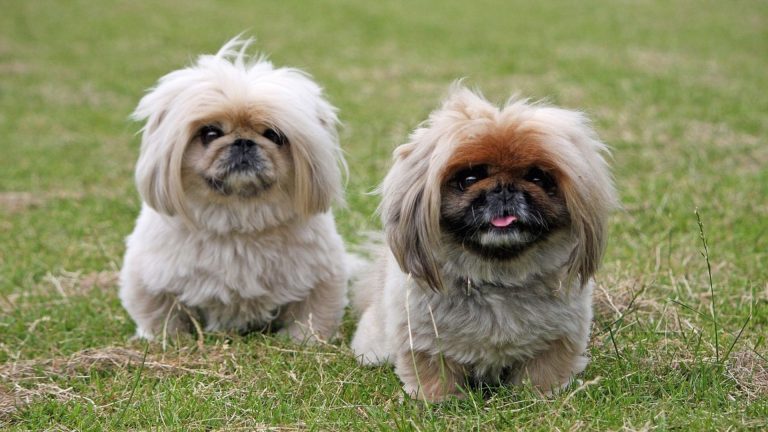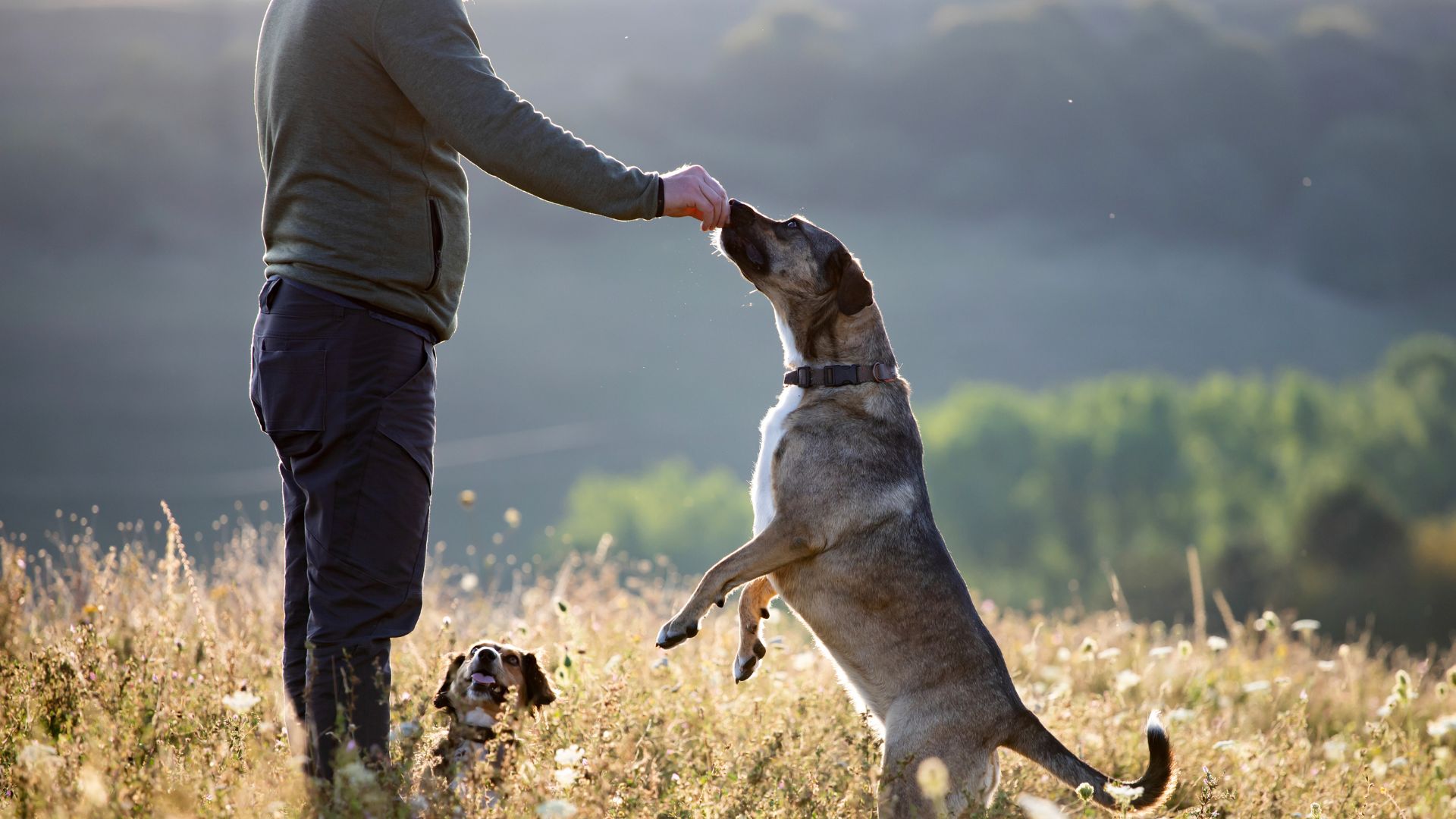
Contents
Dog training is crucial for fostering a healthy, happy relationship between you and your furry companion. Proper training ensures your dog is well-behaved, making daily interactions enjoyable and stress-free. An obedient dog is not only a joy to be around but also safer and more confident in various environments.
This guide covers essential dog training tips, from basic commands to advanced techniques, helping you create a well-mannered and happy dog. Through understanding your dog’s behavior and using positive reinforcement, you’ll build a strong bond and ensure long-term success in training.
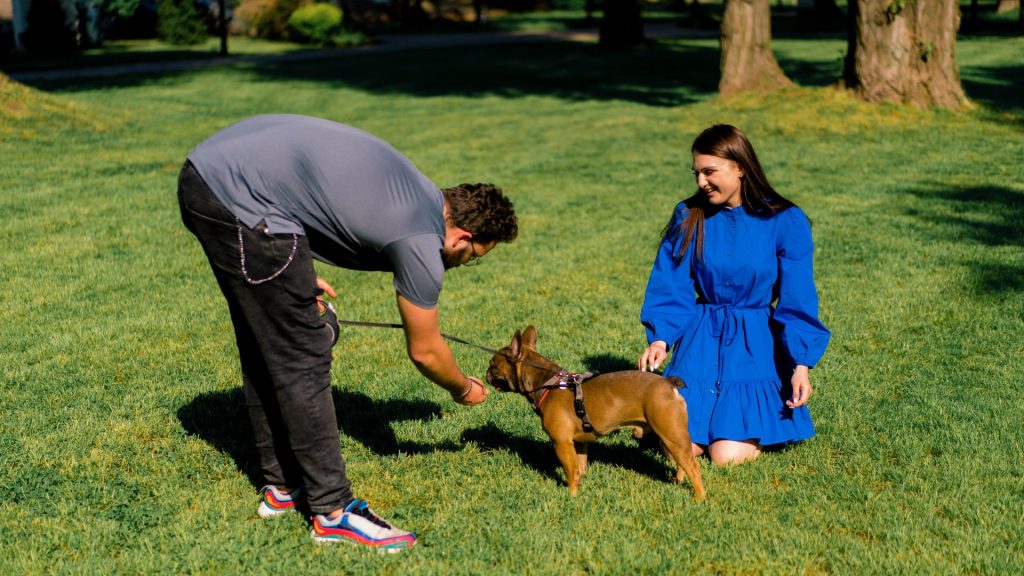
Understanding Your Dog
Recognizing dog behavior and body language is the first step in effective training. Dogs communicate through a range of signals, such as wagging tails, ear positions, and facial expressions. Understanding these cues helps you respond appropriately to your dog’s needs and emotions. Different breeds exhibit unique behavioral traits; for example, herding breeds like Border Collies tend to be more alert and energetic, while companion breeds like Cavalier King Charles Spaniels are often more relaxed and affectionate.
Building a strong bond with your dog involves spending quality time together, using positive reinforcement, and being consistent with your interactions. This foundation of trust and understanding makes training more effective and enjoyable for both you and your dog.
Basic Training Commands
Basic training commands are essential for ensuring your dog’s safety and enhancing your bond. Commands like sit, stay, come, and heel establish a foundation of obedience that can prevent dangerous situations and make daily activities smoother.
Sit
- Hold a treat close to your dog’s nose.
- Move your hand up, allowing your dog’s head to follow the treat and causing their bottom to lower.
- Once in a sitting position, say “Sit,” give the treat, and show affection.
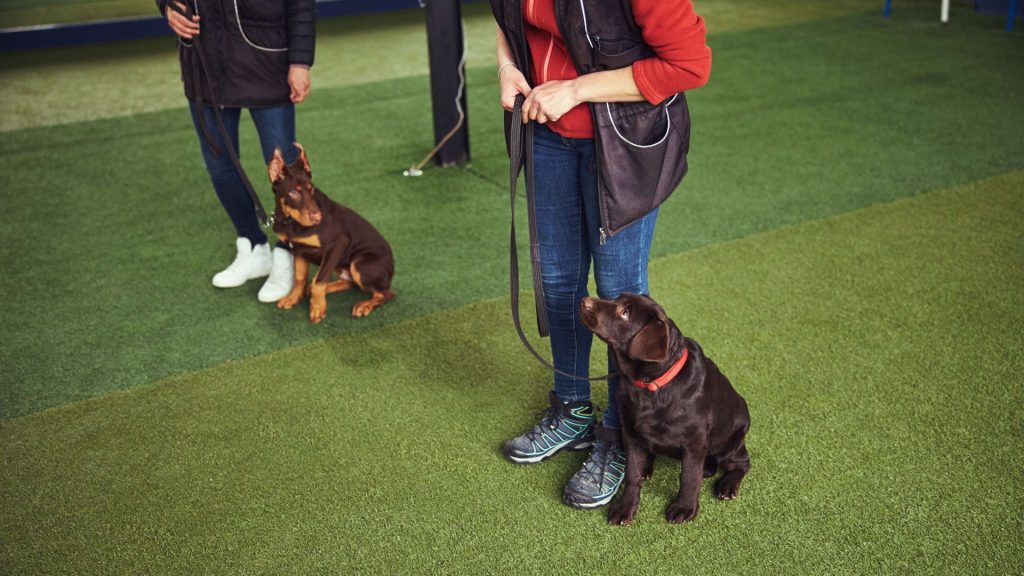
Stay
- Start with your dog in the sit position.
- Open your palm in front of you and say “Stay.”
- Take a few steps back. If your dog stays, reward them with a treat and affection.
- Gradually increase the distance you move before giving the treat.
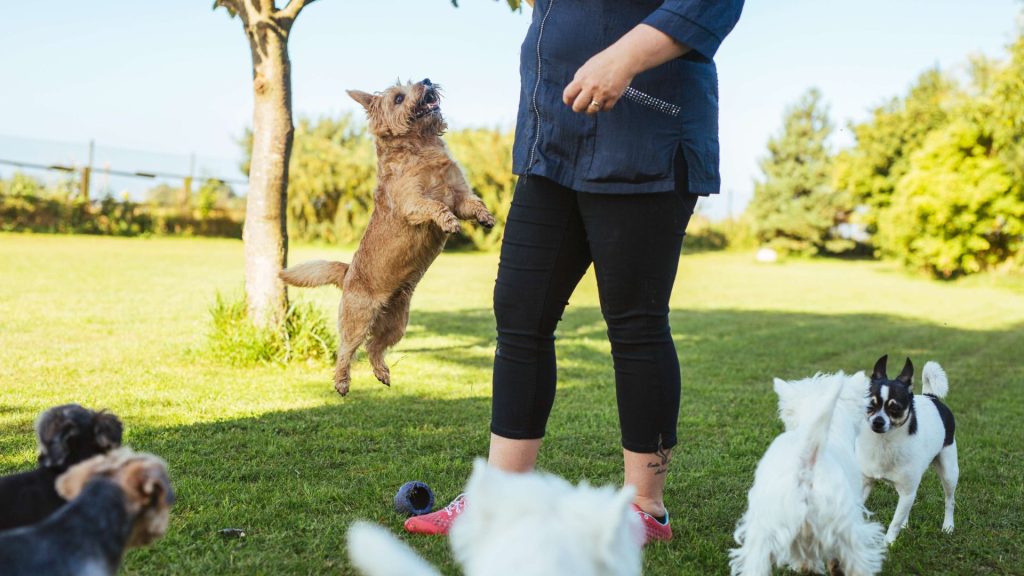
Come
- Put a leash and collar on your dog.
- Get down to their level and say “Come” while gently pulling on the leash.
- When they come to you, reward with a treat and praise.
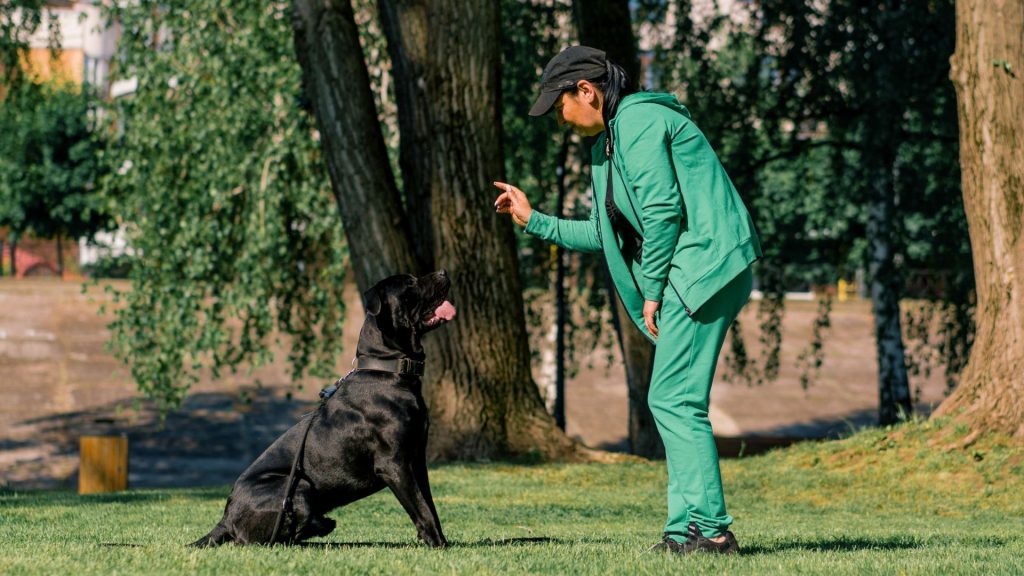
Heel
- With your dog on a leash, hold a treat at your waist.
- Say “Heel” and start walking, keeping the treat close.
- Reward your dog when they walk beside you without pulling.
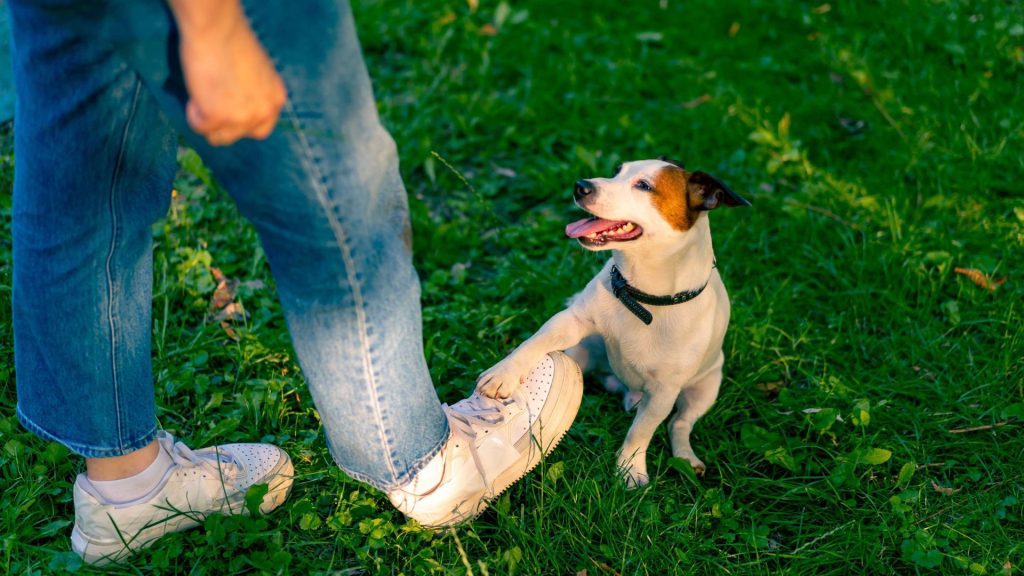
Consistent reinforcement is key to mastering these commands. Practice in short, regular sessions and always use positive reinforcement like treats and praise. This consistency helps your dog learn and retain these essential behaviors.
Positive Reinforcement Techniques
Positive reinforcement is a powerful tool in dog training. It involves rewarding desired behaviors, making them more likely to be repeated. This method is beneficial because it builds trust and encourages your dog to learn in a stress-free environment.
Benefits of Positive Reinforcement
- Enhances the bond between you and your dog.
- Encourages faster learning and retention of commands.
- Promotes a positive and enjoyable training experience.
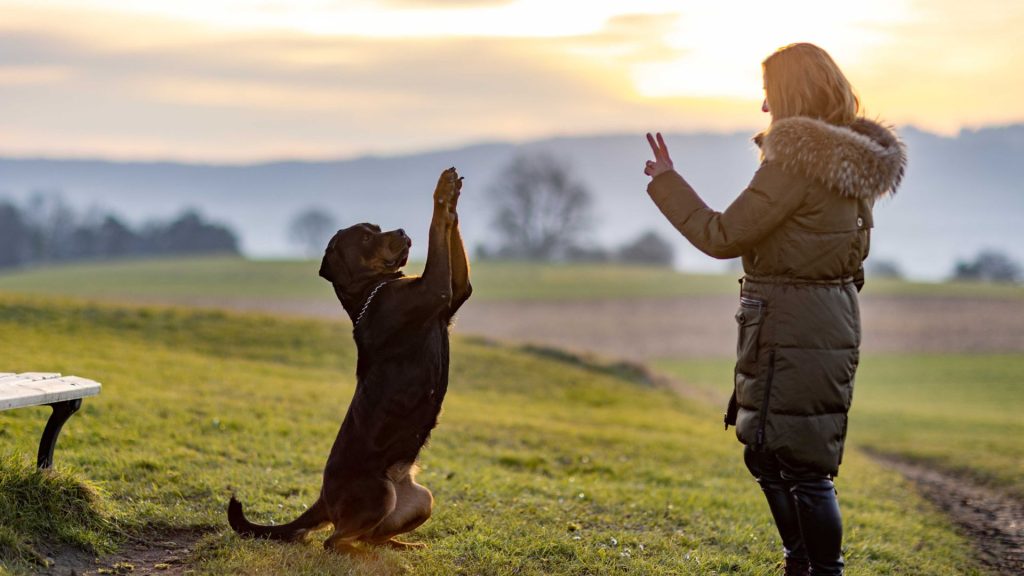
Examples of Rewards
- Treats: Small, tasty treats given immediately after the desired behavior.
- Praise: Verbal encouragement such as “Good dog!” or “Well done!”
- Playtime: Engaging in a favorite game or activity as a reward.
Avoiding Punishment and Negative Reinforcement
Punishment can create fear and anxiety, damaging your relationship with your dog. Instead of using negative reinforcement, focus on redirecting unwanted behaviors and rewarding positive actions. For example, if your dog jumps on guests, ask them to sit and reward them when they do. By consistently using positive reinforcement, you create a supportive learning environment that helps your dog thrive.
Addressing Common Behavioral Issues
Dealing with common behavioral issues is a vital part of dog training. Here are some effective solutions:
Barking
- Identify the Cause: Determine why your dog is barking (e.g., boredom, anxiety, or alerting you).
- Training Command: Teach a “quiet” command, rewarding your dog when they stop barking on cue.
- Environmental Changes: Provide mental stimulation and exercise to reduce excessive barking.
Chewing
- Provide Appropriate Chews: Offer a variety of chew toys to satisfy your dog’s natural urge to chew.
- Remove Temptations: Keep valuable items out of reach and dog-proof your home.
- Redirect Behavior: If you catch your dog chewing something inappropriate, redirect them to a chew toy and reward them for using it.
Jumping
- Teach a “Sit” Command: Encourage your dog to sit when greeting people and reward them for staying seated.
- Ignore Jumping: Turn away and ignore your dog when they jump, giving attention only when they are calm.
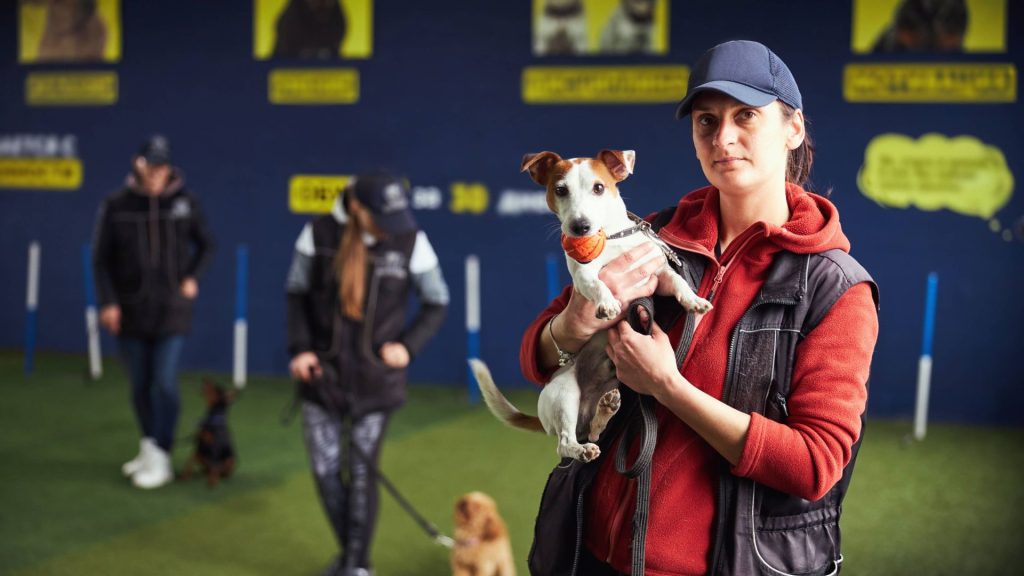
Handling Separation Anxiety
- Gradual Desensitization: Slowly get your dog used to being alone by gradually increasing the time you are away.
- Create a Safe Space: Provide a comfortable area with toys and bedding.
- Stay Calm: Avoid overly emotional departures and arrivals to reduce anxiety.
Socializing Your Dog
- Controlled Introductions: Gradually introduce your dog to new people and animals in a controlled environment.
- Positive Experiences: Reward your dog for calm and friendly interactions.
- Regular Exposure: Consistently expose your dog to various environments and social situations to build confidence and good behavior.
Advanced Training Tips
Once your dog has mastered the basics, you can introduce advanced commands and tricks to challenge their mind and keep them engaged.
Advanced Commands and Tricks
- Speak and Quiet: Teach your dog to bark on command and then be quiet.
- Roll Over: Guide your dog into a roll-over position using a treat.
- Fetch Specific Items: Train your dog to retrieve specific items by name.
Agility Training and Dog Sports
- Set Up a Course: Create an agility course with jumps, tunnels, and weave poles.
- Start Slow: Introduce each obstacle individually before combining them into a sequence.
- Positive Reinforcement: Use treats and praise to encourage your dog through the course.
Clicker Training for Precision
- Introduction to Clicker Training: Use a clicker to mark the exact moment your dog performs the desired behavior.
- Consistency: Click at the same moment for each successful action to create a clear connection.
- Pairing with Rewards: Follow each click with a treat to reinforce the behavior.
By incorporating advanced commands, agility training, and clicker training, you provide mental and physical stimulation for your dog. This keeps them sharp, happy, and well-behaved.
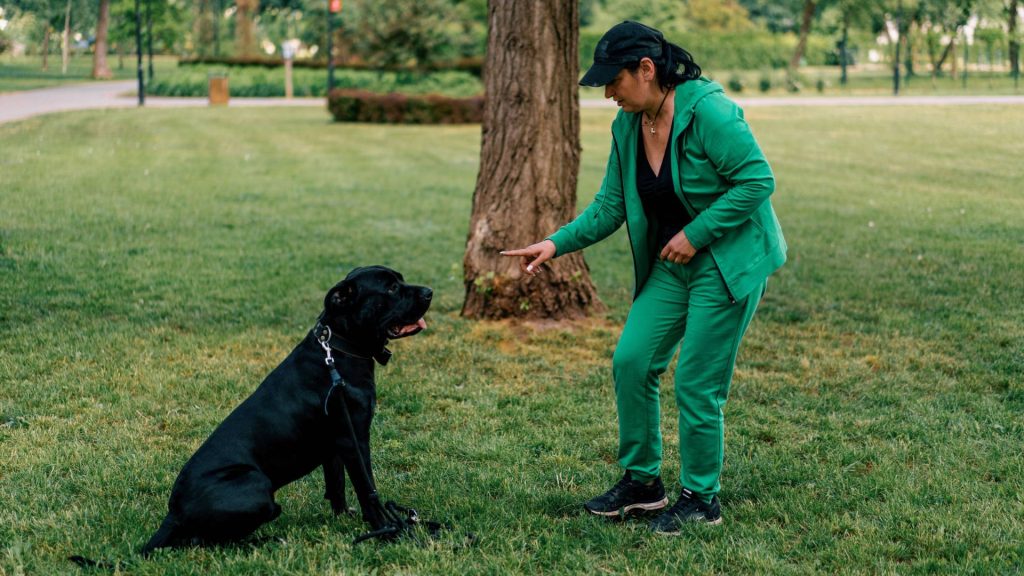
Training Puppies vs. Adult Dogs
Training puppies and adult dogs requires different approaches. Puppies are more adaptable and learn quickly but have shorter attention spans. Focus on basic commands and socialization with lots of positive reinforcement. Adult dogs might have ingrained habits, requiring patience to modify. Special considerations for older dogs include being mindful of any physical limitations and using gentle, low-impact training methods. Regardless of age, patience and consistency are key. Regular, short training sessions, clear commands, and positive reinforcement help dogs of all ages learn and retain new behaviors effectively.
Tools and Resources for Training
Using the right tools can enhance your training efforts. Essential tools include sturdy leashes and collars, which provide control and safety during training. Clickers are excellent for precise training and marking desired behaviors. For further learning, consider books by reputable trainers, online courses, and professional trainers who offer personalized guidance. Resources like these provide valuable insights and techniques. Ongoing education and practice are crucial for maintaining your dog’s training progress. Regularly refreshing commands and introducing new challenges keep your dog engaged, ensuring long-term success and a well-behaved companion.
Maintaining Training and Ensuring Long-Term Success
Consistency is key to maintaining your dog’s training over time. Establish a regular training routine and stick to it. Short, frequent sessions are more effective than occasional long ones. Ensure everyone in the household uses the same commands and rules to avoid confusing your dog.
Tips for Maintaining Obedience
- Regular Practice: Integrate training into daily activities. For instance, ask your dog to sit before meals or stay while you open the door.
- Refresh Commands: Periodically review and practice commands your dog already knows to keep them sharp.
- Positive Reinforcement: Continue using rewards and praise to reinforce good behavior, even after your dog has mastered commands.
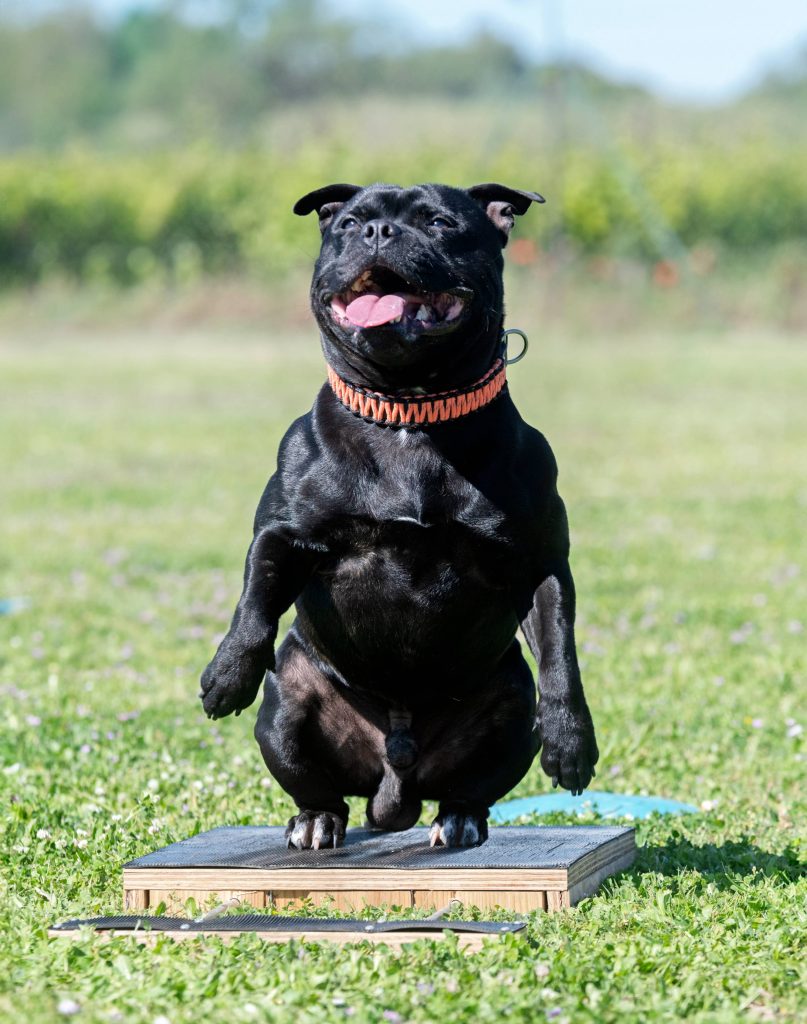
Keeping Training Fun
- Variety: Introduce new commands, tricks, or games to keep sessions interesting.
- Playtime: Combine play with training to make learning enjoyable. For example, use fetch to practice commands like “come” and “drop it.”
- Interactive Toys: Use puzzle toys and treat-dispensing toys to challenge your dog mentally and keep them engaged.
By maintaining a consistent training routine and keeping sessions fun, you’ll ensure your dog remains obedient, happy, and eager to learn.
Conclusion
Training your dog is a rewarding journey that strengthens your bond and ensures a well-behaved companion. We’ve covered essential training tips, from understanding your dog’s behavior and mastering basic commands to addressing common issues and exploring advanced training techniques.
Remember, consistency and positive reinforcement are key. Continue practicing and learning together, making training a fun and integral part of your routine. A well-trained dog is not only a joy to live with but also happier and more confident. Embrace the training journey and enjoy the countless benefits of having a well-mannered canine friend.
For more training tips and tricks, visit petfleck.com.

Hello, I’m Donna Carter, the founder and writer behind PetFleck.com. My journey with dogs started years ago, and it’s been a passion that has only grown stronger over time. I’ve always been fascinated by the unique behaviors and characteristics of different dog breeds, and this curiosity has led me to dive deep into the world of canine studies.
My love for dogs is the driving force behind everything I do. I’ve dedicated countless hours to researching and understanding the nuances of dog care, training, and breed-specific traits. This dedication helps me create content that is not only informative but also genuinely helpful for fellow dog lovers and owners.
At PetFleck, I combine my extensive knowledge and hands-on experience with my passion for dogs to provide valuable insights and tips. Whether it’s exploring different breeds or offering practical advice on dog care, I aim to share knowledge that makes a real difference in the lives of dogs and their families.
I’m thrilled to share my love for dogs with you through my writing. I hope my articles inspire and inform, helping you to better understand and appreciate the incredible bond we share with our furry friends.
Thank you for visiting PetFleck.com, and I look forward to connecting with you through our shared love of dogs!

